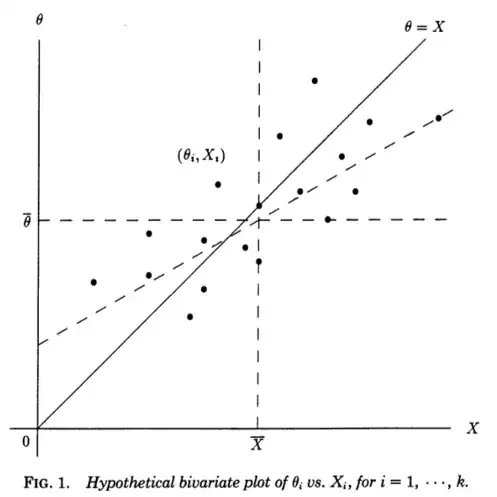Stein's Example shows that the maximum likelihood estimate of $n$ normally distributed variables with means $\mu_1,\ldots,\mu_n$ and variances $1$ is inadmissible (under a square loss function) iff $n\ge 3$. For a neat proof, see the first chapter of Large-Scale Inference: Empirical Bayes Methods for Estimation, Testing, and Prediction by Bradley Effron.
This was highly surprising to me at first, but there is some intuition behind why one might expect the standard estimate to be inadmissible (most notably, if $x \sim \mathcal N(\mu,1)$, then $\mathbb{E}\|x\|^2\approx \|\mu\|^2+n$, as outlined in Stein's original paper, linked to below).
My question is rather: What property of $n$-dimensional space (for $n\ge 3$) does $\mathbb{R}^2$ lack which facilitates Stein's example? Possible answers could be about the curvature of the $n$-sphere, or something completely different.
In other words, why is the MLE admissible in $\mathbb{R}^2$?
Edit 1: In response to @mpiktas concern about 1.31 following from 1.30:
$$E_\mu\left(\|z-\hat{\mu}\|^2\right)=E_\mu\left(S\left(\frac{N-2}{S}\right)^2\right)=E_\mu\left(\frac{(N-2)^2}{S}\right).$$
$$\hat{\mu_i} = \left(1-\frac{N-2}{S}\right)z_i$$ so $$E_\mu\left(\frac{\partial\hat{\mu_i}}{\partial z_i} \right)=E_\mu\left( 1-\frac{N-2}{S}+2\frac{z_i^2}{S^2}\right).$$ Therefore we have:
$$2\sum_{i=1}^N E_\mu\left(\frac{\partial\hat{\mu_i}}{\partial z_i} \right)=2N-2E_\mu\left(\frac{N(N-2)}{S}\right)+4E_\mu\left(\frac{(N-2)}{S}\right)\\=2N-E_\mu\frac{2(N-2)^2}{S}.$$
Edit 2: In this paper, Stein proves that the MLE is admissible for $N=2$.
